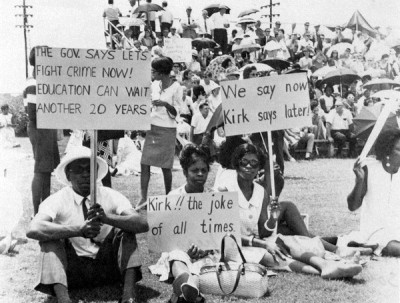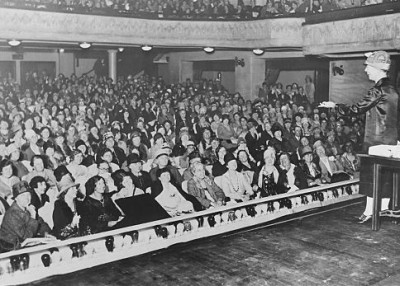The Chicago teachers strike, which ended Tuesday after more than a week of protests and negotiations, has emphasized the power that teachers’ unions can have. Since the earliest days of unions, teachers have been fighting over some of the same issues in contention in Chicago: salaries, conditions at schools and tenure. A look at the history of unions and strikes shows how unions gained power, and their varying levels of success in past collective bargaining attempts across the country.
1857: The National Education Association (NEA) is founded in Philadelphia by 43 educators. The new union focused on raising teacher salaries, child labor laws, educating emancipated slaves and how the forced assimilation of Native Americans affected their education.
1897: The Chicago Teachers Federation is formed to raise teacher salaries and pensions. At this point, teacher compensation mainly consisted of room and board in the local community.
1902: Teachers, parents and students unite in Chicago for the first teachers’ strike, which occurs after a teacher is suspended for refusing to allow a disruptive child back into her classroom. According to journalist Dana Goldstein, the strike helps the newly formed CTF.
1906: In New York, the Interborough Association of Women Teachers fights for equal pay for equal work. During this time, teacher salary is based on position. Secondary-school teachers are paid more than elementary-grade teachers, and non-minority men are paid more than women.
1916: The American Federation of Teachers is created in Chicago as several local unions band together. The AFT focuses on salaries and discrimination against female teachers, including contracts requiring that they wear skirts of certain lengths, teach Sunday school, and not receive “gentleman callers more than three times a week,” according to American Teacher magazine.
1920s -1940s: Strikes are rare, since striking workers were often fired quickly and laws in some states make government worker strikes illegal. Unions focus on improving pay, improving conditions in school, and increasing federal aid to schools.
1950s: The NEA affiliates with 18 black teacher’s associations in states where segregation is rampant. By 1951, 98 percent of urban school districts are paying teachers based on professional qualifications rather than on the grade they teach.
1959: Wisconsin becomes the first state to pass a collective bargaining law for public employees. Union membership increases across the country as more states pass similar laws.
1962: The New York City teachers’ strike lasts one day, but shuts down more than 25 of the city’s public schools. Time labels it the “biggest strike by public servants in U.S. history.”

Florida teachers displaying protest signs during their walkout in 1968 (Courtesy the State Archives of Florida)
1968: Florida statewide teachers’ strike—More than 40 percent of Florida’s teachers strike over salaries and funding for classrooms. This is the first statewide strike in the nation.
New York City teachers’ strike—Three separate walkouts close schools for 36 days. The strike occurs after the newly created school board in Ocean Hill-Brownsville, Brooklyn, dismisses mostly white and Jewish teachers from the majority black district. The UFT demands that the teachers be rehired. The strike ends after the state steps in, and the teachers are reinstated.
1970s and 1980s: Striking breaks out across the country. Although it is illegal in Minnesota at the time, a 1970 strike by Minneapolis teachers over low salaries prompts the state to enact the Minnesota Public Employees Labor Relations Act, which protects teachers’ ability to strike. Strikes also take place in Philadelphia, Wisconsin, Michigan, and Chicago, over pay, medical benefits and contract demands. “The same issues were involved, same picketing, same closing of schools, all of that is identical” to the issues in the recent Chicago strike, said John P. Hancock, Jr., a lawyer in Detroit who represented school boards in two Michigan strikes during this time. “It was really awful.”
1990s- 2000s: Laws restricting collective bargaining rights and the differences in contracts and salaries between districts have greatly diversified the role of unions in each state. Unions have taken stronger positions in political campaigns to support like-minded candidates. They have also been vocal about changes to teacher evaluations, an increased number of charter schools, and the introduction of merit pay, and still have the power to impact education reform rollouts in some of America’s largest cities, as was demonstrated in Chicago.




